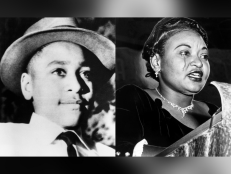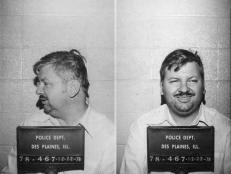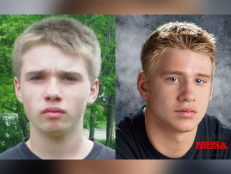The West Memphis Three: Where Are They Now?

It was a case that shocked the nation. On May 5, 1993, three little boys from West Memphis, Arkansas, went out for a bike ride with a promise to their parents that they would be home for dinner. Somewhere along the way, the kids were murdered and thrown into a secluded, wooded area known to locals as Robin Hood Hills.
Steve (Stevie) Branch, Christopher Byers, and Michael Moore, all second-graders at West Memphis’ Weaver Elementary School, had been hogtied with their own shoelaces, sexually mutilated, beaten, and left for dead.
With pressure on their backs to find the culprits, Arkansas authorities arrested three local “outcast” teenagers, known around town for wearing black and listening to heavy metal. At the time, Damien Echols, 18, Jason Baldwin, 16, and Jessie Misskelley, 17, fit the description authorities were looking for.
All three teens were convicted of the murders and ordered to serve life in prison, except for Echols, who was sentenced to death.
Yet, the majority of evidence was circumstantial, dating back to Echols’ troubled childhood that consisted of violence and psychiatric treatment. When juvenile officer Jim Jones heard about the murders, he went directly to Echols for questioning. Jones had no evidence to prove Echols was involved, but he had heard his name frequently from fellow juvenile officer Jerry Driver, who had run-ins in the past with the teen.
Furthermore, no DNA from the suspects was found on the children or anywhere around the crime scene. On the other hand, mtDNA from a strand of hair that could possibly belong to Terry Hobbs, Stevie Branch’s stepfather, was found in one of the bindings used to tie up Michael Moore.
Some evidence, however, circumstantial or not, simply can’t be ignored. A teen girl confessed that she overheard Echols at a softball game in May 1993, describing how he murdered three young boys. Furthermore, Misskelley confessed to the murders not once, but several times on different occasions. Misskelley’s defense attorney stated that his client was slow and mentally incapacitated, and simply told the police what they wanted to hear.
From day one, the teens professed their innocence, and as their cases gained popularity, HBO filmmakers Joe Berlinger and Bruce Sinofsky took an interest in their story and decided to make several documentaries that chronicled the events.
The first documentary, Paradise Lost: The Child Murders at Robin Hood Hills, garnered so much attention from the public that two additional films, Paradise Lost 2: Revelations and Paradise Lost 3: Purgatory, were made. The films resulted in worldwide support for all three guys. They became coined as the West Memphis Three (WM3).
Celebrities such as Johnny Depp, Pearl Jam front man Eddie Vedder, and The Dixie Chicks took a strong interest in the case and fought to get the WM3 freed. Later on, Amy Berg would make a documentary on the case called West of Memphis.
Although there’s still a copious amount of support for the guys, there are some people who believe that the WM3 are indeed guilty, and that the films left out a lot of vital evidence found in the case files. Regardless, in 2011, after nearly 18 years of incarceration, the WM3 were released.
Before officials would let them go, all three men had to agree to take a deal known as the Alford Plea, which mandates that the state of Arkansas admits to no wrongdoing while allowing the WM3 to plead innocent, yet still remain guilty on court files. This is something Baldwin wasn’t willing to take at first, but after mulling over Echol’s death sentence, he accepted the deal, because, as he put it, “[they’re] trying to kill Damien.”
So where are the WM3 now?
Damien Echols
Upon release, Damien Echols, the centerpiece of the Paradise Lost documentaries, moved to New York with his wife Lorri Davis, a former landscape architect who wrote him in prison after seeing the first documentary. After living in the Tribeca section of NYC for several years, the couple bought a home in Salem, Massachusetts. He’s now a successful artist and author who travels the nation promoting his work. Several of his art pieces are on display at the Copro Gallery in Santa Monica, California.
While explaining his art to the Los Angeles Times, Echols said, “My artwork is the same as a practicing Catholic would use a rosary, or a Muslim would use a prayer rug. Things that are set apart from daily life … sacred objects.”
In January 2016, Echols spoke out on the Steven Avery case. The Netflix documentary series Making a Murderer details the death of 25-year-old Manitowoc County, Wisconsin, resident Teresa Halbach. It also chronicles the events that led up to Avery’s arrest. Avery is currently serving a life sentence for Halbach’s murder. Similar to the massive response to the WM3 documentaries, Making a Murderer resulted in mixed responses from the public. While some viewers gave an outpour of support, others felt he was guilty.
After viewing the film, Echols admitted in an article published on A.V. Club that he experienced a sick feeling in the pit of his stomach. He indicated that wrongful imprisonment continues to happen and will continue to do so until the justice system is held to a higher standard: “People have told me over and over that my story is unique, the circumstances of my case—the injustice to the real victims, their families, to the West Memphis Three—made for a perfect storm, never to be seen again. But lightning does strike twice, and many more times after that—my story and Steven’s are only two in the vast, impenetrable legal landscape.”
Jason Baldwin
Jason Baldwin, the youngest, most baby-faced of the WM3, moved to Seattle in 2011 at the urging of Eddie Vedder. He fell in love with the area and had his own home there within five months.
Baldwin is now married, and helped with the 2014 book, Dark Spell: Surviving the Sentence. Written by Mara Leveritt, author of the acclaimed book Devil’s Knot, Baldwin reportedly provides a first-hand account of what is was like to be shackled and thrown into prison at the age of 16.
Baldwin is also the executive producer of the 2014 film Devil’s Knot, starring Reese Witherspoon and Colin Firth. The film is based off Leveritt’s book with the same title, and although Baldwin was thrilled to take part in the film, it created a rift between him and Echols.
Apparently, according to Echols, the film didn’t portray the events accurately, but Baldwin continued on with the project, despite Echols’ objections, claiming some people would rather see a movie about the case instead of documentaries: “Not everyone watches documentaries and there are many people out there who have never heard about this case.”
Baldwin stayed in the limelight for a few years after his release, spreading awareness about wrongful convictions and sharing photos on his social media account. He also created a Kickstarter campaign which raised $30,000 for a memoir he promises to release.
Yet, since late 2014, there hasn’t been much public action from Baldwin. He stopped posting on his social media accounts and hasn’t given any public interviews. In one of his last interviews, however, he said he hoped to attend law school and utilize his own experiences to help others who’ve been wrongfully convicted.
Jessie Misskelley
Jessie Misskelley returned home to West Memphis after his release, the only one out of the WM3 who decided to stay in the area. He also opted to stay out of spotlight, so he remains an enigma in many aspects.
In 2013, Misskelley’s father, Jessie Misskelley, Sr., spoke on his behalf after his son shied away from local reporters. Misskelley Sr. said that his son was living with a girlfriend and was working at a construction site until he got laid off. When questioned why his son wouldn’t talk to the media, Misskelley Sr. replied,
“Because y’all are the ones that sent him to the pen.”
Regardless of whether they hide from the spotlight or embrace it, the WM3 story isn’t easily forgotten. Until someone confesses or evidence can, beyond a reasonable doubt, show who murdered those three boys, the case will remain shrouded in mystery.
Recommended For You
Main photos: Police Handout
![Garrett Warren, 13, [left] and Alfa Barrie, 11, [right] were both found dead in separate Manhattan rivers in May 2023.](http://investigationdiscovery.sndimg.com/content/dam/images/investigationdiscovery/crimefeed/legacy/2023/05/nypd-alfa-barrie-garrett-warren-52423.png.rend.hgtvcom.231.174.suffix/1684955346794.png)








